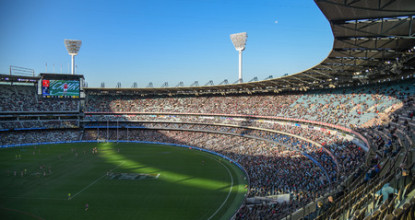Professional sports contracts: Are they worth the paper they are written on?

As a matter of principle, professional sports contracts, whether it be in the NRL, AFL, A-League or Suncorp Super Netball, are more or less the same as other employment contracts. The athlete is the employee and the club that they play for is the employer. Both types of contracts set out the terms and conditions that will govern the relationship between the contracting parties and includes terms relating to salary, KPIs, length of the contract and termination of the contract. In reality though, the practicalities surrounding sports contracts are vastly different, especially regarding their termination.
A prime example of this is the news recently that Jarryd Hayne effected the end of his contract with the Gold Coast Titans to return to Sydney to fulfil his current “lifelong dream” to play for the Parramatta Eels. This isn’t the first time, nor will it be the last, that NRL players have effectively walked out on their clubs with many in the past unable to resist the lure of a well-paid gig in overseas rugby union (I’m looking at you Sonny Bill Williams and Semi Radrara). Hayne himself is a repeat offender having previously walked out on the Eels in 2014 to pursue his then “lifelong dream” to play in the NFL. Standard NRL player contracts do not generally contain an out clause so it has become somewhat common for a player seeking to move to reach a “mutual agreement” with their club whereby the contract is terminated, and the player free to go elsewhere.
The issue isn’t just confined to rugby league either. The AFL has seen a large number of players in the recent trade period, such as Jake Lever, Charlie Cameron and Josh Schache, effectively pushing through their own trade to move back to the state in which they grew up. This so called “go-home factor” has seen players like Charlie Cameron, previously of the Adelaide Crows, requesting a “compassionate” release from his contract so he could be closer to his family and friends. Cameron got his wish, he is now back in QLD and will line up for the Brisbane Lions in 2018.
This contrasts significantly with an ordinary employment context, where an employee is rarely able to up and leave with their employer highly unlikely to reach a “mutual agreement” regarding a release. Ordinary employers certainly would not allow a mutual termination because of a “go-home factor”. If an employee was adamant on leaving, their employer would insist they provide notice under their contract of employment. For particularly skilled and highly valued employees (which would be a fair description of professional athletes), their contracts generally provide long notice periods in which their employer can place them on gardening leave as well as enforce restraints of trade that prevent them from working for competitors.
From the perspective of the clubs, I often wonder why they rarely play hard ball with their players and try to prevent them from leaving. Clubs rarely insist on the performance of the player’s contract (with the Sonny Bill situation being a notable exception) despite investing significant resources in them in the form of money, development and draft picks. Nor do clubs attempt to enforce restraint of trade provisions after they have left. Clearly, clubs would much rather cut their losses and run than have a $1.2 million a year player such as Jarryd Hayne, or a number 2 draft pick such as Josh Schache, sulking in reserve grade when they could let them go, and use that money and salary cap space to recruit someone who wants to be there.
However, it would seem the pendulum has swung too far towards player power with clubs seemingly unable to ensure that their players, many of whom are extremely well paid, honour their contracts. Professional sporting clubs need to consider whether a hard-line approach should be adopted because it is clear that if the status quo remains, professional sporting contracts will continue to be worth less than the paper than are written on.
This content is general in nature and provides a summary of the issues covered. It is not intended to be, nor should it be relied upon, as legal or professional advice for specific employment situations.
Pingback: Why employment needs rules: Recent stories from Sport | Workplace Culture Matters